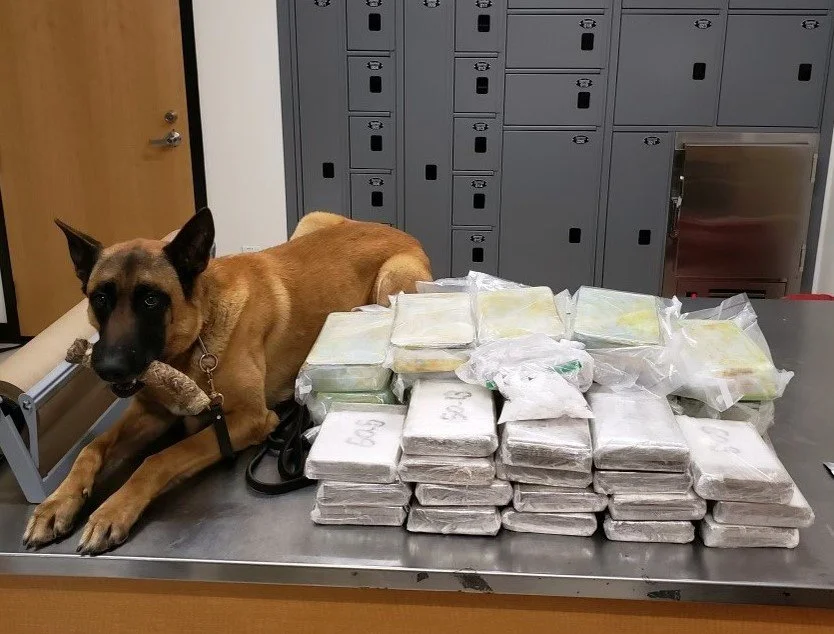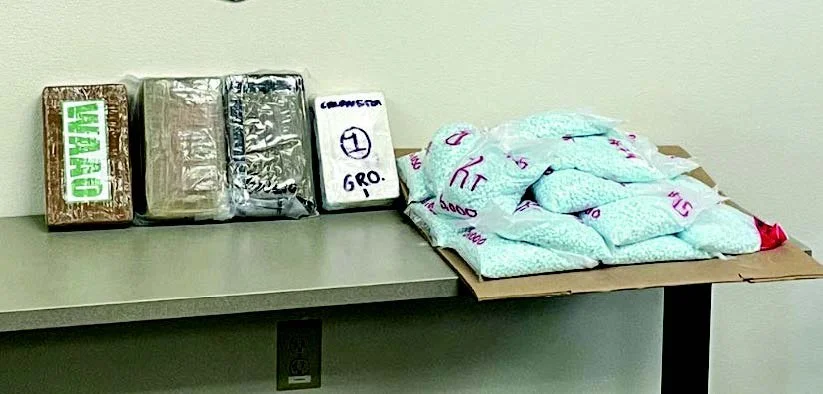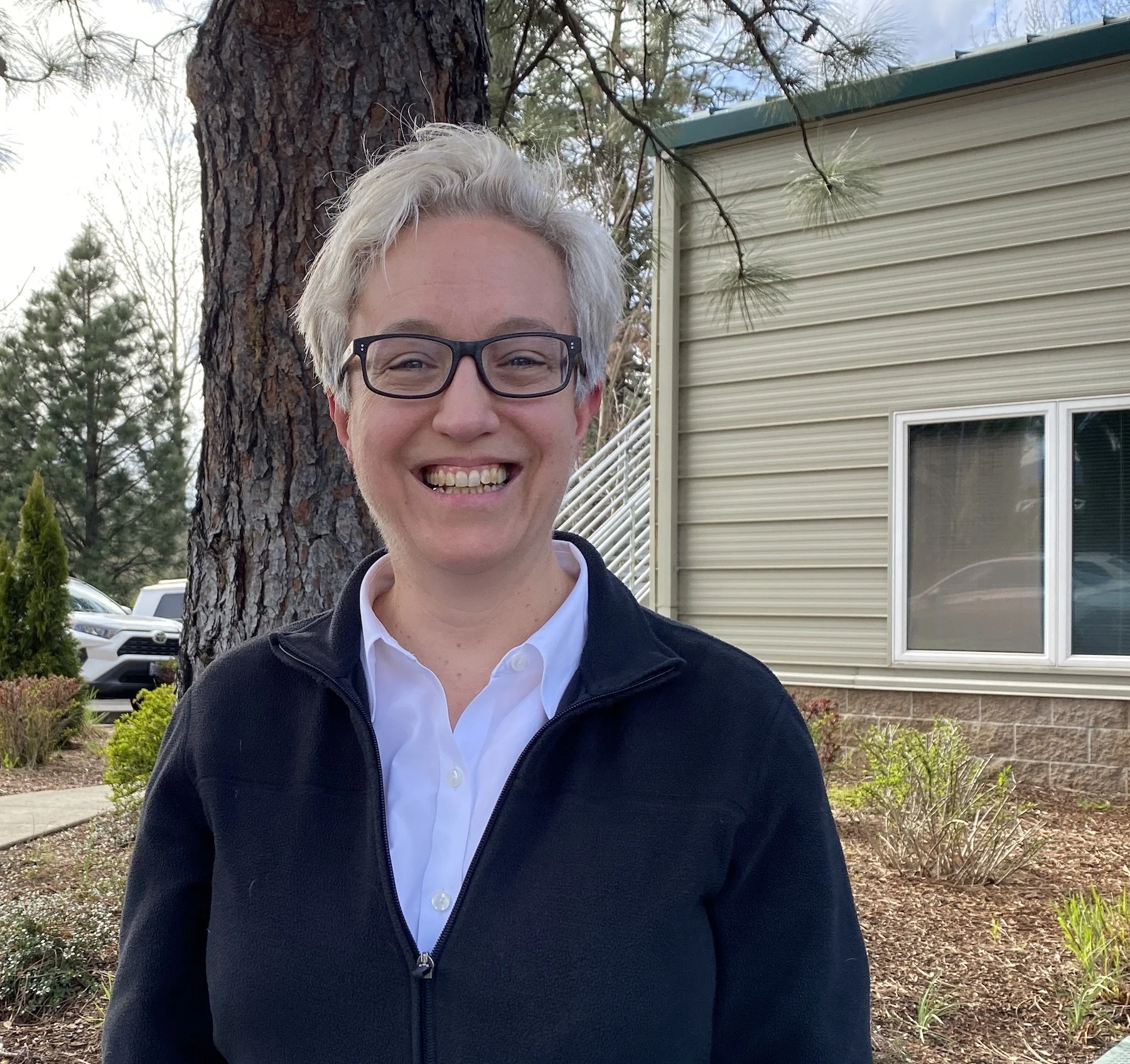Deluge of Fentanyl Overdoses raining down on Measure 110
On April 23, 2023, an OSP Trooper out of the Salem Area Command stopped a vehicle and his K-9 Titan located 51 lbs. of suspected Methamphetamine, 31 lbs. of suspected powder fentanyl ,9 lbs. of suspected cocaine, 2 lbs. of suspected heroin during a traffic stop.
By Tom Peterson
As fentanyl continues to pour into Oregon and the United States, local police are dealing with one to two overdoses a month in the streets of the Dalles.
“Were administering Narcan - an antidote - to about two overdoses a month,” said TD Police Chief Tom Worthy on April 21. “People are dying in the streets… Some people need 4 to 6 doses (of Narcan) to revive them.”
“In the preceding twelve months we’ve had 17 suspected overdose deaths and officers have directly saved the lives of two others who were overdosing by using Narcan,” said Worthy in October.
On April 21, an Oregon State Trooper from the La Grande Area seized approximately 100,000 Fentanyl pills, 3 Kilograms of Heroin and 1 Kilogram of Fentanyl Powder during a traffic stop.
Timing: Fentanyl and Measure 110
The Dalles Police Chief Tom Worthy
Cheap Fentanyl is making the drug problem larger in Oregon despite the passage of Measure 110 in 2020. The measure aimed to reduce overdoses by treating addiction as a healthcare problem rather than punishing addicts through the criminal system.
It reduced the penalties for drug possession for small amounts of controlled substances including of Fentanyl, cocaine, methamphetamine, LSD, oxycodone, heroin, psilocybin mushrooms, MDMA, and others.
It dropped possession from a class A misdemeanor to a class E violation.
The new policy makes it similar to a speeding violation: it’s still against the law, but in most cases, you won’t pay the price in jail.
Worthy said the $100 fine can be dropped with a phone call to a treatment center where the addict can deny treatment.
It is argued that treating addiction as a healthcare problem makes a lot more sense than putting people in jail, a much more costly and less effective solution.
But there are Problems
A recent headline in The Economist magazine read “Oregon botches the decriminalisation of drugs”. The article points to the sharp increase in overdoses.
Stats from the Oregon Health Authority:
There were 280 unintentional opioid overdose deaths in 2019.
There were 472 unintentional opioid overdose deaths in 2020.
There were 745 unintentional opioid overdose deaths in 2021.
There is not enough addiction treatment in place to handle the number of people needing it in Oregon.
Oregon is in the midst of having to build a group of social workers to address the drug problem from the ground up at the time of the Great Resignation.
National Public Radio reported in March 2022, that thirty percent of current jobs in the addiction and recovery workforce are unfilled. That's according to a survey from the Oregon Council for Behavioral Health. "It's the biggest workforce crisis I've seen in my entire 25-year career," said Heather Jefferis, the organization's Executive Director.
Oregon Gov. Tina Kotek at Mid-Columbia Center for Living in Hood River on April 21.
That’s a point not lost on Oregon Governor Tina Kotek who was in The Dalles on April 21.
On her tour of Wasco and Hood River counties, she said it was suggested that boot camps to recruit and train health care workers to address addiction and other behavioral problems. But even then, are there enough people in the labor force to fill those shoes?
Multiple billboards, locally, are pasted with employment advertising and business owners often note the difficulty of finding people to work.
Outliving Addiction
And while it is argued that addicts must be willing to receive treatment to be effective - people die using the current ledger of more and more potent drugs such as Fentanyl.
Chief Worthy also warned of Xylazine, also known as "tranq." It is a powerful animal tranquilizer coming on the black market. It may enhance the clinical effects of some drugs, worsening toxic effects.
Dr. Rahul Gupta, Director of the White House Office of National Drug Control Policy officially designated fentanyl adulterated or associated with xylazine as an emerging threat to the United States in April 14, noting its growing role in overdose deaths in all regions of the country.
The Dalles Police Capt. Jamie Carrico
Those that are teetering on the edge of overdose are forced into detox when jailed, possbily saving their lives, TD Police Capt. Jamie Carrico pointed out, noting prior to 110, a first conviction of methamphetamine possession in Wasco County typically drew an 18-month probation with the possibility of expungement with successful addiction treatment.
“We’ve been standing in front of a firehose with this problem,” Worthy said. “I’m not in favor of repealing 110, but we need a more balanced approach that does not ignore the problem.”
Worthy asked whether there was a corrective course of action that would move the crime of drug possession to a higher level crime than a $100 ticket.
Gov. Kotek said the fact remained that addicts have to want to receive addiction treatment, and it can’t be forced and changing statutes to be more punitive for drug possession would be ineffective in addressing the problem.
Kotek proposed $32.1 Billion proposed 2023-25 budget, in part, focuses on improving access to mental health and addiction services.
To that end, it puts millions of dollars toward beds and outpatient services for addiction treatment.
Her budget proposes:
$278.9 million in addiction treatment, overdose prevention, peer support services, funded partly by Measure 110 grants
$15 million for inpatient treatment and recovery community centers
$40 million to reduce deaths associated with opioid use
In addition, she said she is asking the legislature to add another $90 million to “fill the gaps.” to pay for things such as transportation and child care, and other barriers for people falling through the cracks.
More on Opiates- a quick primer
Fentanyl is a potent synthetic opioid drug approved by the Food and Drug Administration for use as an analgesic (pain relief) and anesthetic. It is approximately 100 times more potent than morphine and 50 times more potent than heroin.
And opium and its variants have been used for thousands of years. Great Brittain used the drug in the 1800s to reduce the trade disparity between itself and China. China’s populace endured mass addictions as trunks of opium were brought into China from India so that merchants could raise funds to purchase Chinese goods of silk and spices that were sold in England. It lead to two wars and addiction problems in China that took hold until the Communist Party came into control in the mid-1900s.
In July 2021, the State of Oregon reached a $325 million agreement on a national lawsuit against four companies -McKesson, Cardinal Health, AmerisourceBergen, and Johnson & Johnson for their role in the opioid crisis, where prescriptions of opioids were dolled out to the public illegally.
These funds can be used for a wide variety of opioid prevention, treatment, and recovery strategies that are listed in the settlement.
Is Time Running out On Measure 110?
For years, a connection between drug use and crime has been made in the argument to treat drug possession and use as a crime.
“Another dimension of drug-related crime is whether the offense is committed to obtain money (or goods to sell to get money) to support drug use, according to a report by the U.S. Department of Justice. According to Bureau of Justice national surveys, the most comprehensive information available, an estimated 17% of 1991 State prison inmates and 13% of convicted jail inmates in 1989 reported committing their offenses to get money to buy drugs. Offenders convicted of robbery, burglary, and larceny/theft were most likely to commit their offenses to obtain money to buy drugs.
Theft is at its highest point in five years in Wasco County
Theft-related property crimes, including thefts, criminal mischief, burglaries, and unauthorized use of vehicles, have increased significantly over the past three years. There were 147 cases issued in 2021 and 185 theft-related cases issued in 2022, according to a recent report from Wasco County District Attorney Matthew Ellis.
At the same time, fewer drug charges are being served, following the passage of Measure 110.
Something has got to give
Ultimately, the question is will addiction and behavioral services and physical beds in which to put people catch up with the demand for it in Oregon.
Or will the pendulum of public opinion swing before that point to a more punitive law for drug possession before a healthcare approach to addiction can be tested?
It’s a wait-and-see if Oregonians can stomach the pain it takes to get up to speed.
Kotek said she remained optimistic.
“Right now the public is still in favor of treating this as a health care issue,” she said. “My job is to build a better treatment system for folks…”





